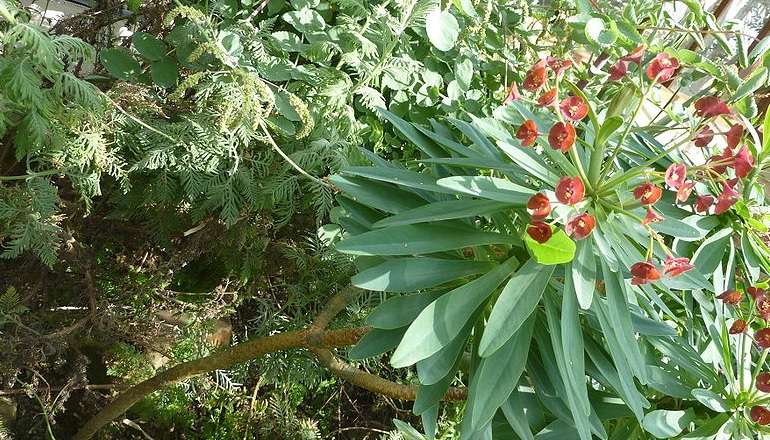
Plants use natural latex in different ways, to help poison insects or rapidly heal wounds, a new study has found.
Scientists from the Universities of Oxford, Sheffield and Freiburg tested latex samples from two different types of plant.
They found that Euphorbia plants use slow-drying latex to keep insects in contact with their noxious sap whereas Ficus plants, such as the weeping fig, use fast-drying latex to seal wounds more quickly.
Latex is a milky fluid found in around 10% of flowering plants, and is the main constituent of natural rubber. The team developed a new way of testing the mechanical properties of latex, and their research is published today in Journal of the Royal Society Interface. The work was led by Dr Chris Holland, formerly of Oxford University, who now works in the Materials Science and Engineering Department at the University of Sheffield.
'When injured, the latex of Euphorbia plants takes a long time to harden,' said Dr Holland. 'This gives the plant time to deliver a cocktail of poisonous compounds to stop biting insects. Ficus latex on the other hand hardens rapidly, sealing the wound to prevent infection and fluid loss.'
The team took latex samples from Euphorbia and Ficus plants grown in the Oxford University Botanic Garden and a commercial nursery in Freiburg. They chose species related to those used for industrial latex production, but which had developed naturally. This kept the work relevant to industry while ensuring that the plants' properties came about through natural, not artificial, selection.
Euphorbia is the fourth-largest genus of flowering plants, with around 5,000 species currently identified. Some species are cactus-like in appearance, and many of the plants thought to be cactuses in Africa actually belong to the Euphorbia genus. Weeping figs (Ficus benjamina) are common office plants, and in natural conditions the trees can grow up to 30m. Insights into the properties of their latex and its biological origins were made possible by collaboration between materials scientists and biologists.
'This study highlights the intellectual advances and fundamental understanding that can be achieved when two normally separate disciplines interact as closely as we did,' said Dr Georg Bauer from the University of Freiburg's Plant Biomechanics Group.
The researchers hope that these studies, which cross the interface between physical and life sciences, will help us to better understand the ways materials are used in nature.
"This project is about being inspired by nature to discover and implement things that can help mankind to face the challenges that the future brings,' said Professor Fritz Vollrath from Oxford University's Department of Zoology. 'The insights from this study could show us where to look for natural latex with certain properties for industrial applications. It could also enable us to design new synthetic polymers, inspired by nature."
